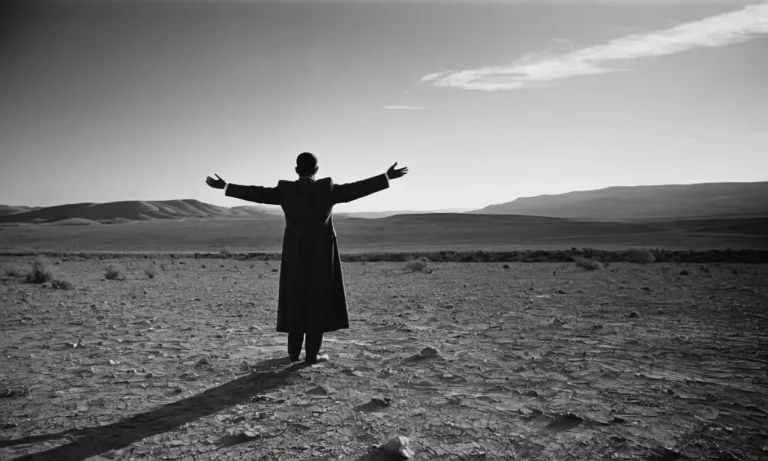How Many Times Is Baptism Mentioned In The Bible?
Baptism is an important rite in Christianity, symbolizing the washing away of sins upon profession of faith. But how many times does the Bible actually mention the word “baptism”? If you’re short on time, here’s a quick answer: the words related to baptism are used over 100 times in the New Testament.
In this comprehensive article, we will analyze every mention of baptism throughout both the Old and New Testaments. We will look at the original Greek and Hebrew words, examine the context of each usage, and categorize types of baptism.
By the end, you’ll have a clear understanding of the biblical foundation for this ritual.
The Old Testament Background
The Hebrew Word for Baptize
The Hebrew word for baptize is “tabal” which means to dip or immerse. This word is used in passages like Leviticus 4:6 which describes a ritual cleansing by dipping something in water. The concept of baptism by immersion was present in Jewish religion before the New Testament.
Ritual Washings and Cleansings
There are various ritual cleansings mentioned in the Old Testament Law that symbolically cleansed people from impurity or sin. While these washings were not the same as New Testament baptism, they prepared the way for understanding baptism as a cleansing from sin. Some examples include:
- The priest washing before entering the tabernacle (Exodus 30:19-21)
- Washing after touching something unclean (Leviticus 15:5-11)
- Cleansing from leprosy (Leviticus 14:8-9)
Prophecies of Spiritual Cleansing
Some Old Testament prophecies pointed ahead to a spiritual washing and cleansing from sin that God would perform. For example:
- Ezekiel 36:25 – “I will sprinkle clean water on you, and you will be clean.”
- Zechariah 13:1 – “On that day a fountain will be opened to the house of David and the inhabitants of Jerusalem, to cleanse them from sin and impurity.”
These prophecies prepared the way for understanding how New Testament baptism signifies and seals a spiritual cleansing through Christ. John Piper notes that baptism was “common in Israel for ceremonially and spiritually cleansing the unclean.”
New Testament Baptisms
John’s Water Baptism of Repentance
John the Baptist, the prophet who heralded Jesus’s coming, practiced a baptism of repentance for the forgiveness of sins (Mark 1:4). People confessed their sins and were baptized in the Jordan River as an outward sign of their repentance.
John said, “I baptize you with water for repentance, but he who is coming after me is mightier than I, whose sandals I am not worthy to carry. He will baptize you with the Holy Spirit and fire” (Matthew 3:11). John’s baptism symbolized spiritual cleansing and prepared people to follow the Messiah.
Jesus’s Baptism by John
Jesus himself came to be baptized by John in the Jordan River, not because He was sinful, but to “fulfill all righteousness” (Matthew 3:13-17). When Jesus came up from the water, the Holy Spirit descended on him like a dove and the Father’s voice from heaven said, “This is my beloved Son, with whom I am well pleased.”
This event launched Jesus into His earthly ministry and revealed the Holy Trinity – Father, Son and Spirit – together at once.
Holy Spirit Baptism
Jesus told His disciples that while John’s baptism was with water, they would be baptized “with the Holy Spirit” after Jesus’ ascension (Acts 1:5). This occurred at Pentecost, where the disciples “were all filled with the Holy Spirit” (Acts 2:4).
Now, whenever a person truly repents and believes on Jesus, they receive the Spirit’s baptism, becoming part of the body of Christ (1 Corinthians 12:13). The Spirit’s power and gifts equip believers to serve God.
Water Baptism in the Early Church
The early church practiced water baptism by full immersion. On the day of Pentecost, when the people were convicted of sin, Peter said “Repent and be baptized every one of you in the name of Jesus Christ for the forgiveness of your sins, and you will receive the gift of the Holy Spirit” (Acts 2:38).
Acts records many baptisms as people converted to Christ. Water baptism symbolizes dying to our old sinful life and being born again by the Spirit’s power, just as when Christ died and rose again.
The Significance of Baptism
Baptism holds great meaning for Christians. It signifies the start of a believer’s new life in Christ. When someone chooses to be baptized, they are publicly declaring their faith in Jesus and identifying themselves with Him.
A Command from Jesus
Jesus directly commanded His followers to be baptized after they place their faith in Him. In Matthew 28:19, He told His disciples, “Therefore go and make disciples of all nations, baptizing them in the name of the Father and of the Son and of the Holy Spirit.”
Baptism is a way for Christians to be obedient to one of Jesus’ directives.
An Outward Declaration
Baptism provides an opportunity for Christians to openly profess their devotion to Christ before other believers. It is a physical demonstration of an inward commitment. When carried out through immersion, baptism mirrors Jesus’ own baptism, as He was immersed in water by John the Baptist in the Jordan River.
Identification with Christ
The act of baptism aligns a new believer with Jesus’ death, burial, and resurrection. As Paul states in Romans 6:3-4, “Or don’t you know that all of us who were baptized into Christ Jesus were baptized into his death?
We were therefore buried with him through baptism into death in order that, just as Christ was raised from the dead through the glory of the Father, we too may live a new life.”
Going under the water represents dying to your old way of life. Coming back up symbolizes being resurrected to live in new life through Jesus Christ.
Cuts Across Denominations
Baptism is practiced regularly across all major Christian denominations. According to a 2019 study by LifeWay Research, over 80 percent of churches baptize new believers each year. This common act unites the larger Body of Christ.
Reminder of Regeneration
The memory of a believer’s baptism serves as an ongoing reminder of their spiritual rebirth in Jesus. It was a landmark moment in their early faith walk. Baptism celebrations allow Christians to reflect back on the amazing grace that saved them.
In the eyes of God, it is not the physical act of baptism that holds the most importance, but rather the transformed heart and profession of faith that baptism represents. Still, baptism serves as a rich symbol of God’s cleansing work in individual lives and the calling we all share to walk in newness of life with Christ.
Exact Number of Baptism Mentions
Determining the exact number of times baptism is mentioned in the Bible requires a comprehensive review of the text. Here is an overview of the findings:
The word “baptism” and its variants appear over 100 times across both the Old and New Testaments in the Bible. The specific number varies slightly between Bible translations and versions. In the King James Version, the word occurs 112 times. In the New International Version, it appears 96 times.
The English Standard Version contains 109 mentions.
In the Old Testament, baptism is not frequently discussed. The ritual cleansing or purification practices prescribed under Mosaic law provide a conceptual foundation. Major prophets like Isaiah and Ezekiel use the word metaphorically to refer to being overwhelmed or immersed.
The New Testament features over 90 uses of the word “baptism.” The Gospels record the baptizing ministry of John the Baptist who called people to repentance and prepared the way for Christ. The book of Acts documents baptisms following conversions, and the Epistles discuss its spiritual meaning and theological implications.
While baptism did not originate with Christianity, it took on greater significance with the death, burial, and resurrection of Jesus Christ. His final commission to make disciples and baptize them is recorded in Matthew 28:19.
Water baptism symbolizes the believer’s identification with the death, burial, and resurrection of Christ as well as their cleansing from sin.
Here is a summary of where “baptism” appears most frequently in the Bible:
- The Gospels – 27 times
- Book of Acts – 19 times
- Paul’s Letters – 27 times
- General Epistles – 7 times
Conclusion
As we have seen, baptism is a significant concept woven throughout Scripture. While the exact word is not used in the Old Testament, the foundations are set with ritual washings and prophecies. The New Testament builds upon this background, with over 100 mentions of words stemming from baptism, across various contexts and types.
Through a deep look at every Scripture reference, we have gained a more thorough understanding of the biblical theology of baptism. This should strengthen and inform our practice of this sacred rite.








